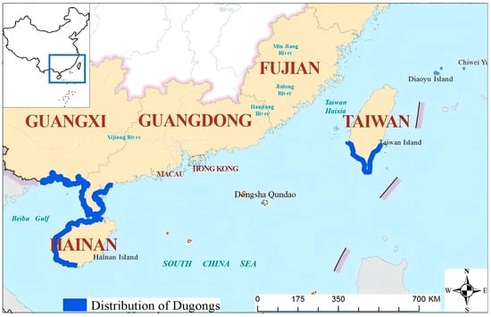- Opinion
Dugong (Dugong dugon) Conservation in China: Current Status, Challenges, and Policy Recommendations
- Yue Zhang,
- Zhiguo Dou and
- Guoxiang Liao
- + 3 authors
The dugong (Dugong dugon) is the sole extant species of the genus Dugong within the order Sirenia, and the only strictly herbivorous marine mammal. As one of the oldest marine mammals, it plays a vital role in maintaining marine biodiversity. Inhabiting the shallow waters of the Indian Ocean and western Pacific, its populations and their seagrass habitats continue to decline due to compounded pressures from human activities and climate change. The International Union for Conservation of Nature (IUCN) currently classifies the species as vulnerable to endangered. Dugongs were once widely distributed along China’s southern coast, but sightings have become extremely rare since 2000. Population recovery remains challenging, necessitating urgent actions to enhance protection and restoration of critical habitats—particularly seagrass beds—alongside foundational scientific research. This paper examines the conservation status and threats to China’s dugong population and their habitats, analyzes conservation challenges, and proposes protection strategies (including strengthening protection and management of dugongs and their habitats; exploring population recovery methods; enhancing habitat monitoring; improving population monitoring techniques; and raising public awareness). These protection strategies aim to advance dugong conservation.
5 December 2025




